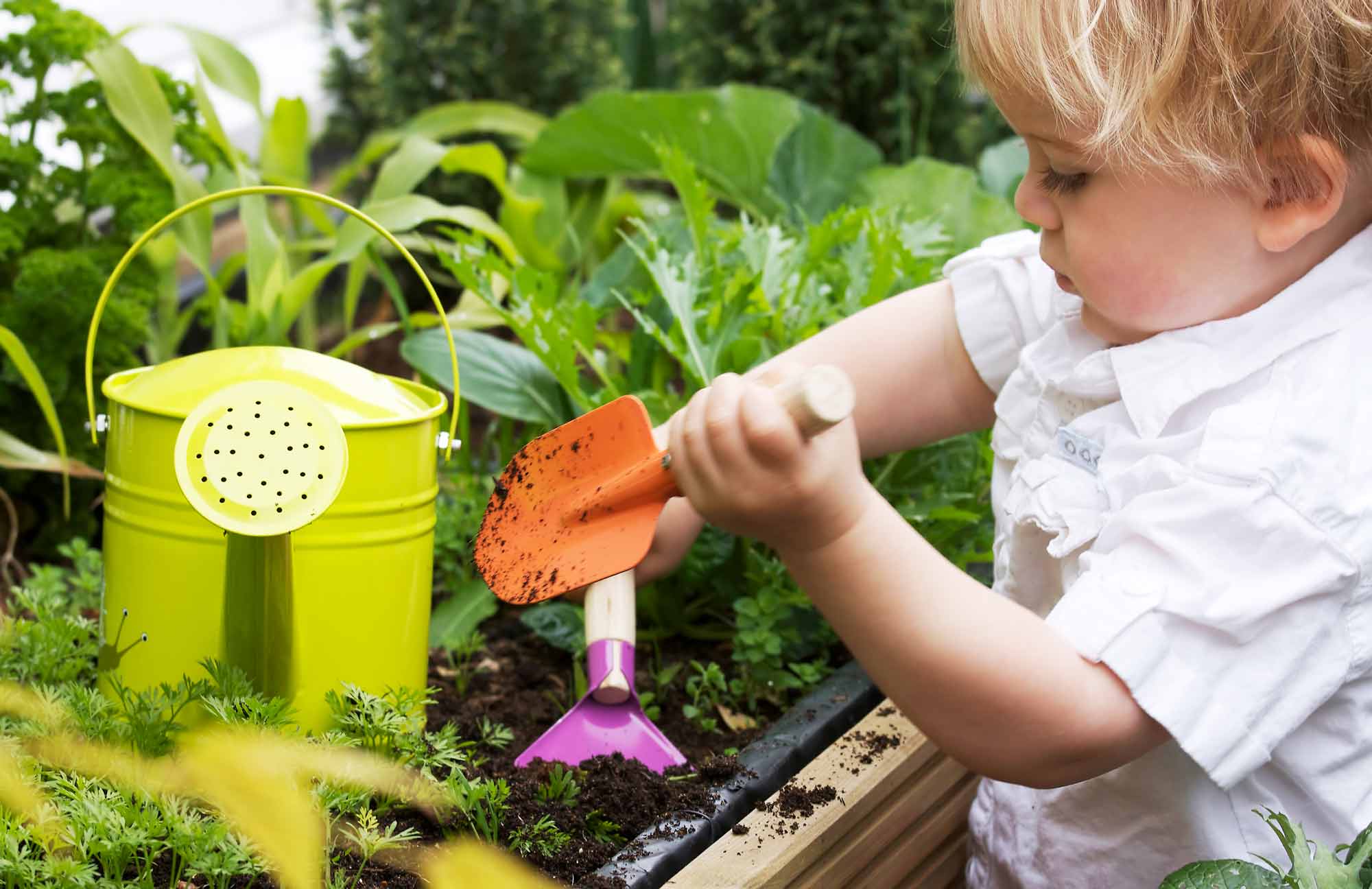Growing Lettuce From Scraps
In this lesson, you can use scraps from your kitchen to quickly and easily regrow lettuce for your children to observe, investigate and enjoy as a snack.
Content Area:
Earth, Water and Air
Learning Goals:
This lesson will help toddlers and preschoolers meet the following educational standards:
- Demonstrate curiosity about the world and begin to use the practices of science and engineering to answer questions and solve problems
- Explore concepts and information about the physical, earth and life sciences
Learning Targets:
After this lesson, toddlers and preschoolers should be more proficient at:
- Observing, investigating, describing and categorizing living things
- Describing and comparing the basic needs of living things
- Comprehending that living things grow and change
- Understanding that living things rely on the environment and/or others to live and grow
- Showing respect for living things

Growing Lettuce From Scraps
Lesson plan for toddlers/preschoolers
Step 1: Gather materials.
- Romaine lettuce cut three inches above the core
- Shallow bowl or container
- Toothpicks
- Water
- Sunlight
Note: Small parts pose a choking hazard and are not appropriate for children age five or under. Be sure to choose lesson materials that meet safety requirements.
Step 2: Introduce activity.
- Gather students together to identify some vegetables they have at home.
- Discuss what happens to the vegetables we don’t eat and are usually thrown out.
- Ask questions: What we can do with our vegetable scraps instead of throwing them in the garbage? Is it possible to grow vegetables and herbs indoors without using seeds? Is it possible to regrow food from food scraps?
Step 3: Engage children in lesson activities.
- Organize the children into small groups and ask them to pick a lettuce scrap to plant. Determine how many lettuce scraps you will grow in your classroom.
- Discuss the steps that the children will need to follow to root their lettuce scraps. Work with the children as needed to complete these steps.
- Instruct the children to place the lettuce in a container and show them how to insert toothpicks into the lettuce cores to hold them in place in the containers.
- Add just enough water to the container to cover the bottom third of the lettuce core; if you add too much water, the lettuce core will rot.
- Place the containers in a sunny window and discuss what plants need to grow and thrive.
- Discuss what the children will need to do to care for their kitchen scrap garden.
- Instruct the children to check their containers daily and add more water to replace water that has evaporated. Discuss the concept of evaporation. Replace the water every few days.
- Within a few days, new leaves will sprout from the center of the lettuce core. You can continue to grow the lettuce in the water or transplant it into a flower pot filled with dirt.
- Cut the lettuce when it is two or three inches tall and add it to a salad or sandwich!
Step 4: Vocabulary.
- Basic needs: What a living thing needs to grow and survive
- Document: To write down observations that can be used to identify changes or similarities over time
- Evaporation: When water slowly turns from a liquid into a gas called water vapor
- Growth: How a living thing develops over time
- Observe: To watch with the purpose of identifying changes or behaviors
- Scrap gardening: Growing new plants from fruit and vegetable scraps that would normally be tossed in the garbage or kitchen compost bin
Step 5: Adapt lesson for toddlers or preschoolers.
Adapt Lesson for Toddlers
Toddlers may:
- Learn from engaging in only part of the process (give toddlers an easy task such as serving as “Plant Detectives” who check on the plants periodically to see if they have grown or need water)
- Incorporate plants into cooking activities to make connections between plants and how they are used
Child care providers may:
- Encourage toddlers to use their senses (smell, hearing and taste and touch) to learn more about growing and using plants
Adapt Lesson for Preschoolers
Preschoolers may:
- Continue their investigations by growing different herbs, vegetables and fruits from scraps
Child care providers may:
- Broaden the learning experience by initiating a garden project that involves the children, their families and even the larger community
- Help the children learn how to identify plants in a garden by using seed catalogs, gardening books and online resources
Suggested Books
- Grandpa’s Garden by Stella Fry
- Goodnight, Veggies by Diana Murray
- Harlem Grow by Tony Hillery
- In a Garden by Tim McCanna
- Save the Scraps, Save the Earth by Bethany Stahl (a book about composting)
- Thank You, Garden by Liz Garton Scanlon
Music and Movement
- “Inch by Inch“ by Raffi
- “Quavi, Quavi“ by Taj Mahal
- “The Valley of Vegetables“ by Laurie Berkner Band
Outdoor Connections
- Once your lettuce has rooted, your plants can be moved to an outdoor container or a raised garden bed to continue growing.
Web Resources
- Food Revolution Network has a beautiful scrap gardening infographic.
Comment on this lesson